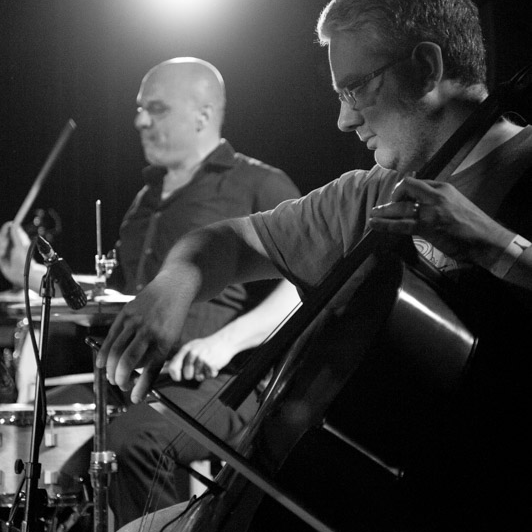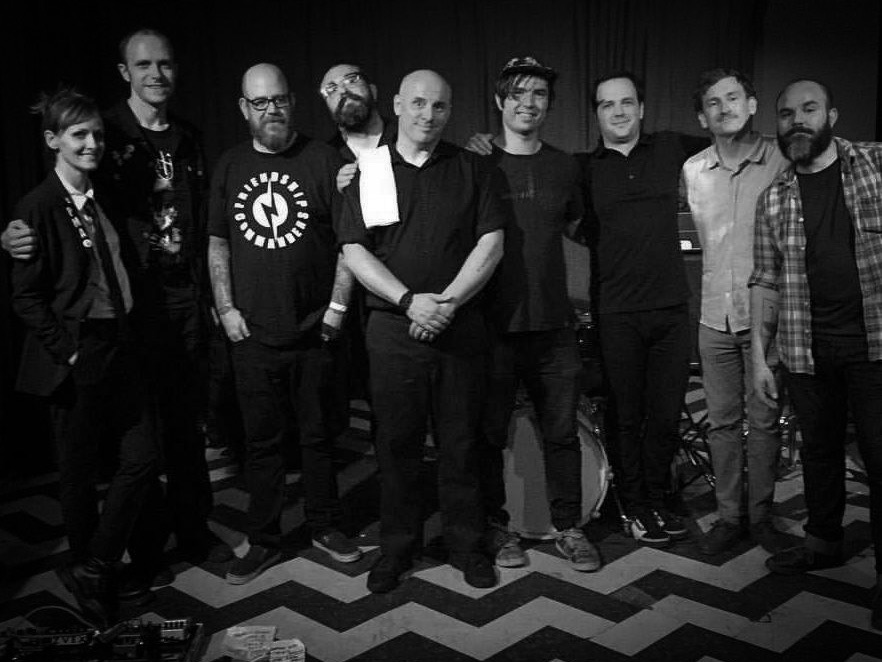The playlist below includes four examples of what BELLS≥ has been doing towards our next album, a collection of music called North American Spirituals. If you saw any of our performances on our tour last August, you heard quartet versions of another two of the pieces (“The First Ray” and “May You Bury Me”), both of which were written thus far with the group’s then-current line-up in mind.
That is, the pieces that will comprise “North American Spirituals” remain in variously-preliminary states, and while Chris Ernst has been working on them in Baltimore and Stephen Shodin and I have taken a swing at them here in New York, Gordon Withers recently performed some of his own ideas at the Galaxy Hut in Arlington, VA.
At the root of Gordon’s cello sketches are drum demos I recorded with J. Robbins at The Magpie Cage back in May. We set up a drum kit and some other drums and percussion and recorded for an hour or so. The next few hours were spent on edits, overdubs, and rough mixes. Chris Ernst was there, too, and by the time we left the studio that evening, we had drum tracks for a handful of pieces ready for distribution to each other and our collaborators. It’s not the way we’ve worked in the past, but we thought we should give it a shot, passing the tracks back and forth until Chris, Stephen, and I sense completion, and in the meantime, with hopes of such an outcome as Gordon has provided here. BELLS≥ has always been a collaborative group with its three core members at the compositional center, and since the beginning, Gordon, like J., has been a key contributor to BELLS≥. To have Gordon playing along with loops of my beats sounds, in the end, as natural as the two of us playing together.
Additionally, I’ve included in this post a Pete Duvall photo of Gordon and me from a few years ago in hopes of providing evidence of our performative unity in this somewhat unusual situation.

All of which is to say, here are four pieces from Gordon’s last show. One of the selections includes some organ from J. and orchestra bells from Chris, both recorded when I cut the drum tracks, and not live with Gordon. Be advised that these are only sketches, improvisations on some rhythmic ideas we have in mind. But we thought you’d enjoy them so here they are.

